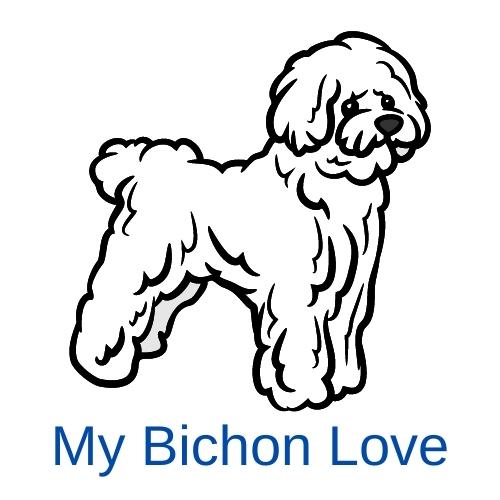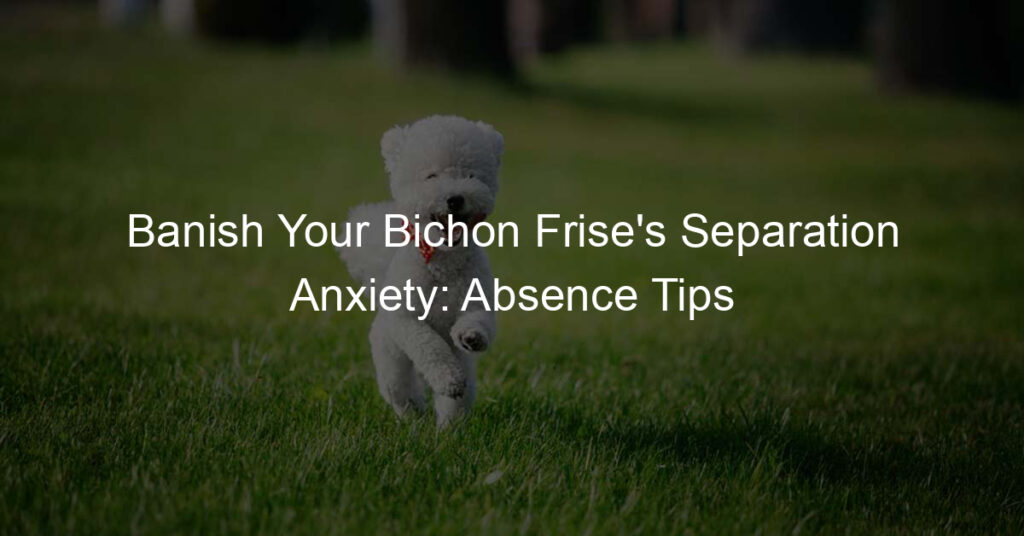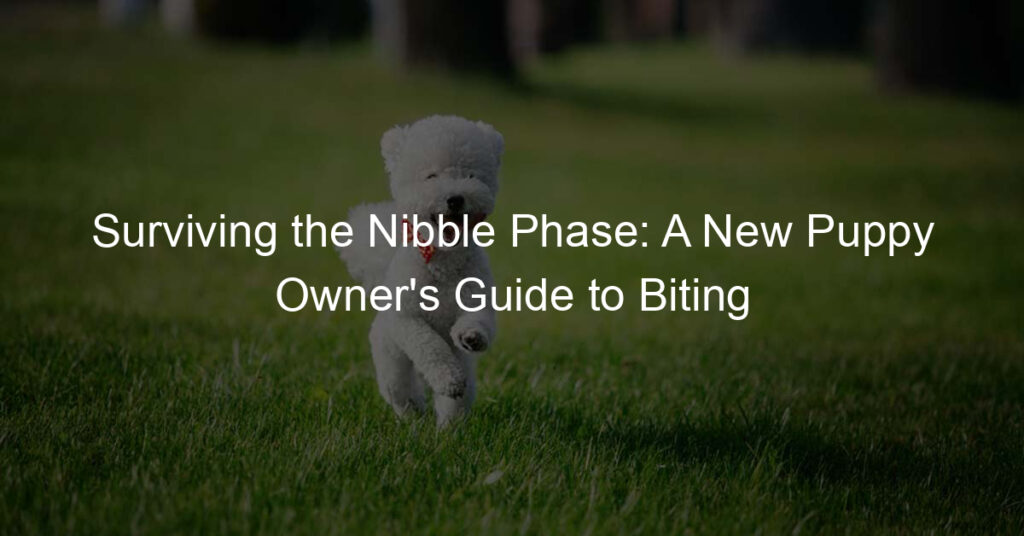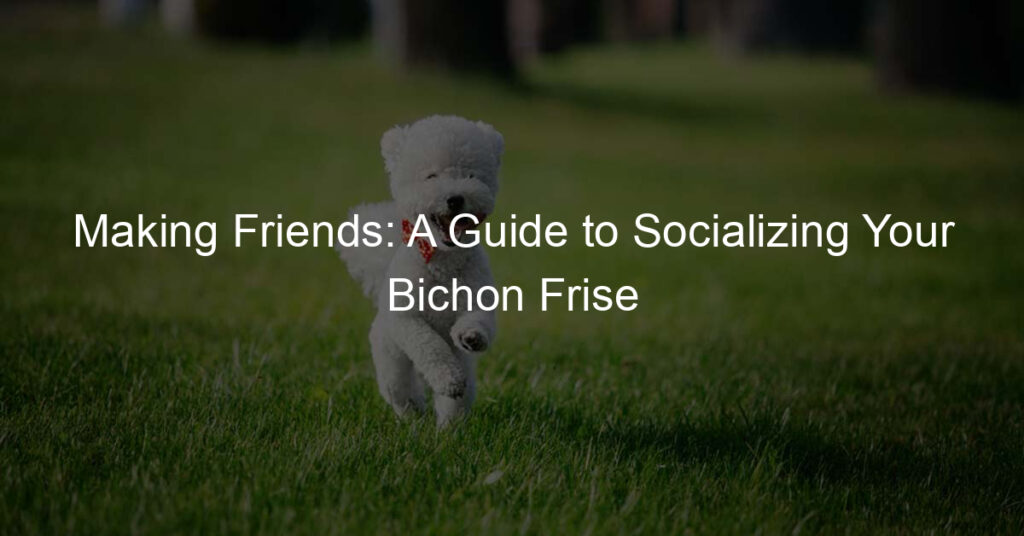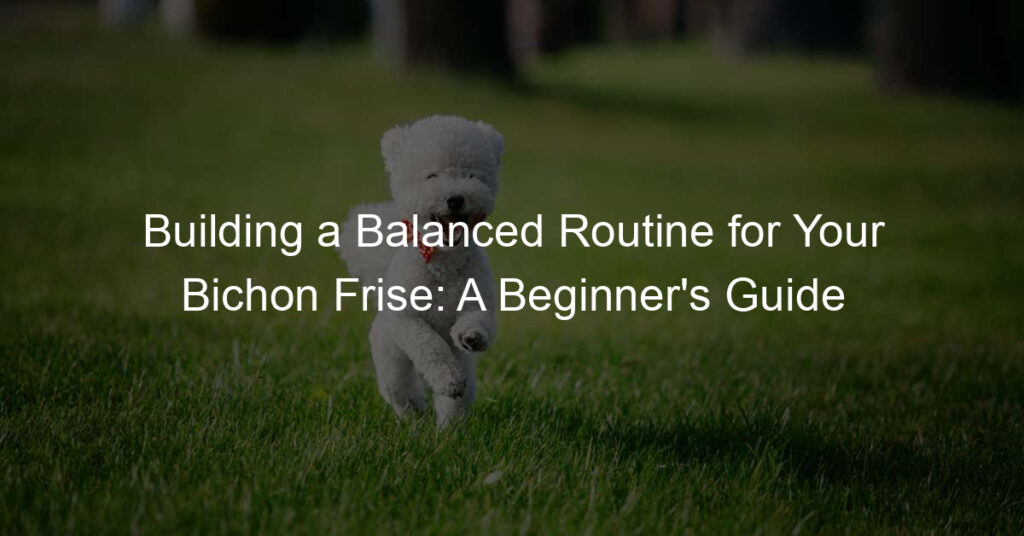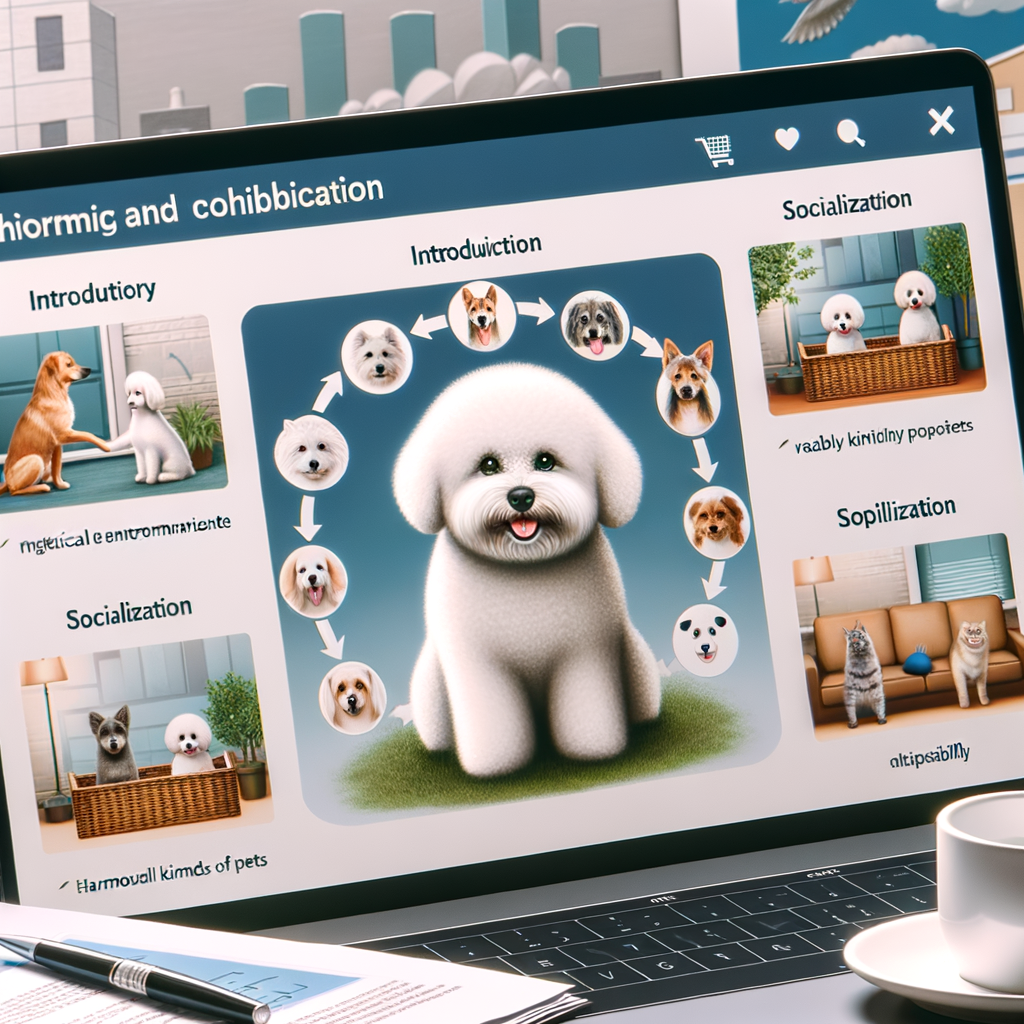
The Bichon Frise, a small, cheerful, and friendly breed, is known for its distinctive fluffy white coat and playful demeanor. Understanding the behavior of this breed is crucial for potential owners, as it helps ensure a harmonious and happy cohabitation. This section will delve into the key traits of Bichon Frise behavior and the importance of socialization for this breed.
The Bichon Frise originated in the Mediterranean region and was bred to be a companion dog. This breed is known for its sociable and affectionate nature, making them excellent family pets. They are small in size, usually weighing between 10 to 20 pounds, and have a life expectancy of 12 to 15 years. Bichon Frises are intelligent and quick learners, but they also have a stubborn streak, which can sometimes make training a challenge.
Key traits of Bichon Frise behavior
Bichon Frises are known for their friendly and outgoing behavior. They are typically very sociable and get along well with both humans and other animals. Bichon Frises are also known for their high energy levels and love of play, which makes them great companions for active families. However, they can also be quite sensitive and do not respond well to harsh training methods. Instead, they thrive on positive reinforcement and gentle guidance.
Importance of socialization for Bichon Frise
Socialization is crucial for Bichon Frises. As a breed, they are naturally sociable and enjoy being around people and other animals. However, like all dogs, they need to be properly socialized from a young age to ensure they grow up to be well-rounded and confident adults. Socialization involves exposing the dog to a variety of people, environments, and situations in a controlled and positive manner. This helps them learn to react appropriately and feel comfortable in different situations.
In conclusion, understanding the Bichon Frise breed and its behavior is key to ensuring a happy and harmonious relationship with this delightful dog. Remember, every Bichon Frise is unique and may not display all the typical traits of the breed. Therefore, patience, understanding, and a lot of love are essential when bringing a Bichon Frise into your home.
Bichon Frise Cohabitation: Compatibility with Other Pets
When it comes to cohabitation, the Bichon Frise is known for its friendly and adaptable nature. However, it’s important to understand how they interact with other pets, especially dogs. Let’s delve into this topic.
Bichon Frise and Dogs
While Bichon Frises are generally friendly, their compatibility with other dogs can vary based on several factors.
-
- Assessing Compatibility
Before introducing a Bichon Frise to other dogs, it’s crucial to assess compatibility. Factors such as the other dog’s temperament, size, and energy levels can impact how well they get along.
For instance, Bichon Frises are small dogs with moderate energy levels. They may feel threatened by larger, more energetic dogs. On the other hand, they can get along well with dogs that are calm and not overly dominant.
It’s also important to consider the Bichon Frise’s temperament. They are known for their friendly and sociable nature, but they can also be quite sensitive. If the other dog is overly aggressive or territorial, it may cause stress for the Bichon Frise.
-
- Introducing a Bichon Frise to Other Dogs
Once you’ve assessed compatibility, the next step is to introduce the Bichon Frise to the other dog. This should be done gradually and under controlled conditions to ensure a smooth transition.
Start by allowing the dogs to sniff each other through a barrier, like a gate or a crate. This allows them to get used to each other’s scent without the risk of a physical confrontation.
Next, introduce them in a neutral location, such as a park. This can help prevent territorial behavior. Keep both dogs on leashes and allow them to approach each other slowly. Reward positive interactions with treats and praise to encourage good behavior.
Finally, monitor their interactions closely for the first few weeks. It’s normal for there to be some tension as they establish their relationship, but any signs of aggression should be addressed immediately.
In conclusion, while Bichon Frises can get along well with other dogs, it’s important to assess compatibility and introduce them properly to ensure a harmonious cohabitation.
Bichon Frise and Cats
Living with a Bichon Frise and a cat can be a delightful experience, provided the right steps are taken to ensure a harmonious cohabitation. Understanding cat behavior and introducing a Bichon Frise to cats are two key aspects of this process.
- Understanding Cat Behavior
Cats are independent creatures with a strong sense of territory. They can be aloof, but also enjoy companionship and play. Cats communicate through body language, vocalizations, and scent marking. Understanding these behaviors can help in introducing a Bichon Frise to a cat.
| Cat Behavior | Meaning |
|---|---|
| Arched back and fluffed tail | Fear or aggression |
| Purring | Contentment or distress |
| Slow blinking | Trust and affection |
- Introducing a Bichon Frise to Cats
When introducing a Bichon Frise to a cat, it’s important to proceed slowly and with caution. Here are some steps to follow:
- Keep them separated initially. Let them get used to each other’s scent.
- Gradually introduce them, supervising their interactions.
- Reward positive behavior with treats and praise.
- Never force interactions. Let them take their own time.
Remember, every pet is unique. What works for one might not work for another. Patience and understanding are key to a successful introduction.
In conclusion, understanding cat behavior and introducing a Bichon Frise to cats can pave the way for a harmonious cohabitation. It’s all about patience, understanding, and positive reinforcement.
Bichon Frise and Small Pets
Living with a Bichon Frise and small pets can be a delightful experience. Bichon Frises are known for their friendly and gentle nature, making them suitable companions for smaller pets. However, certain precautions need to be taken to ensure a harmonious cohabitation.
- Precautions with small pets
Small pets like hamsters, guinea pigs, and birds can be vulnerable around larger pets. Even though Bichon Frises are generally friendly, their curious nature might stress smaller pets. Therefore, it’s crucial to monitor their interactions and provide separate spaces for each pet.
It’s also important to teach your Bichon Frise to respect the smaller pet’s space. Training sessions can help establish boundaries and prevent any accidental harm. Remember, the safety and comfort of all your pets should be the top priority.
- Introducing a Bichon Frise to small pets
Introducing a Bichon Frise to small pets should be done gradually and under supervision. Start by allowing them to sniff each other through a barrier, like a pet gate or cage. This gives them a chance to get used to each other’s scent without any physical contact.
Next, allow them to see each other without any physical contact. This can be done by placing the small pet’s cage in the same room as the Bichon Frise. Monitor their reactions. If both pets seem calm and curious, you can proceed to the next step.
Finally, allow supervised face-to-face interactions. Keep these sessions short and positive, rewarding good behavior with treats. Over time, these interactions can be extended as the pets become more comfortable with each other.
Remember, every pet is unique and may require more time to adjust. Patience and consistency are key to successful introductions.
Bichon Frise Introduction Tips: Making the First Meeting Smooth
Introducing a Bichon Frise to your home or to other pets can be a delightful experience. However, it’s essential to make the first meeting as smooth as possible. Here are some tips to help you prepare for this important event.
-
- Preparing the environment
Before bringing your Bichon Frise home, make sure the environment is safe and comfortable. Remove any items that could harm your new pet, such as small objects they could swallow. Create a quiet, calm space where your Bichon Frise can relax and feel secure. If you have other pets, introduce them gradually to avoid overwhelming your new pet.
-
- Monitoring the first interaction
Keep a close eye on the first interaction between your Bichon Frise and other pets or family members. Look for signs of stress or discomfort, such as excessive barking or hiding. If your Bichon Frise seems comfortable, reward them with a treat or praise. Remember, patience is key during this process.
-
- Steps to take if the introduction doesn’t go well
If the first meeting doesn’t go as planned, don’t panic. It’s normal for pets to need time to adjust to new environments and companions. If your Bichon Frise seems overly anxious, give them some alone time in a safe space. You can also consult with a professional dog trainer or a vet for additional guidance.
In conclusion, introducing a Bichon Frise to a new environment or to other pets requires careful preparation and monitoring. If the first meeting doesn’t go well, remember that it’s okay and there are steps you can take to help your pet adjust. With patience and understanding, your Bichon Frise will soon feel at home.
Coexistence Tips for Pets: Ensuring a Harmonious Home
When it comes to creating a peaceful environment for your pets, especially Bichon Frise, there are several strategies you can use. By establishing routines, providing separate spaces, and encouraging positive interactions, you can ensure a harmonious home for all your pets. Let’s delve into these strategies in detail.
-
- Establishing routines
Just like humans, pets thrive on routines. This is particularly true for Bichon Frise dogs, who are known for their playful and lively nature. By establishing a routine, you provide your pets with a sense of security and predictability. This includes regular feeding times, playtimes, and walks. It’s important to stick to these routines as much as possible, as sudden changes can cause stress and anxiety in pets.
-
- Providing separate spaces
While it’s important for pets to interact and bond, it’s equally important for them to have their own space. This is especially true when introducing a new pet into the home. Providing separate spaces for your pets allows them to retreat and relax when needed. For a Bichon Frise, a comfortable bed in a quiet corner of the room can make a huge difference in their comfort and happiness.
-
- Encouraging positive interactions
Encouraging positive interactions between your pets is crucial for a harmonious home. This can be achieved through supervised playtimes, shared activities, and reward-based training. For instance, if you have a Bichon Frise and a cat, you might reward them with treats when they interact calmly and peacefully. Over time, this can help foster a positive relationship between them.
In conclusion, creating a harmonious home for your pets involves a balance of routine, personal space, and positive interactions. By implementing these strategies, you can ensure a peaceful and happy environment for all your pets, including your Bichon Frise.
Case Study: Bichon Frise and Pet Cohabitation
Let’s dive into some real-life examples of Bichon Frises living with other pets. These case studies will give us a deeper understanding of how this breed interacts with other animals.
-
- Case study 1: Bichon Frise and dog cohabitation
Meet Bella, a Bichon Frise, and Max, a Labrador Retriever. Initially, Bella was a bit hesitant around Max due to his size. However, with time and patience, they became the best of friends. They now enjoy playing and spending time together. This case study shows that Bichon Frises can cohabitate well with other dogs, even those of larger breeds.
-
- Case study 2: Bichon Frise and cat cohabitation
Next, we have Snowy, a Bichon Frise, and Whiskers, a domestic shorthair cat. Snowy was curious about Whiskers from the start, while Whiskers was a bit more reserved. After a few weeks of careful introductions and supervised interactions, they began to coexist peacefully. This example demonstrates that Bichon Frises can live harmoniously with cats when given proper introduction and time to adjust.
-
- Case study 3: Bichon Frise and small pet cohabitation
Finally, let’s look at Daisy, a Bichon Frise, and Mr. Nibbles, a guinea pig. Daisy was initially very excited about Mr. Nibbles, which made him nervous. The owners introduced them gradually, allowing Daisy to observe Mr. Nibbles in his cage before allowing supervised interactions. Eventually, Daisy learned to be calm around Mr. Nibbles, and they now coexist peacefully. This case study shows that with careful management, Bichon Frises can live with smaller pets too.
These case studies highlight the adaptable nature of Bichon Frises and their ability to cohabitate with a variety of other pets. It’s important to remember that every pet is an individual, and successful cohabitation depends on careful introductions, patience, and understanding.
Conclusion: Bichon Frise Socialization Tips for a Happy Home
As we wrap up our discussion on Bichon Frise socialization, it’s important to remember that a well-socialized Bichon Frise is a happy and content pet. Let’s revisit some of the key points we’ve covered.
-
- Revisiting the importance of socialization
Socialization is crucial for a Bichon Frise. It helps them become well-rounded dogs that can interact positively with other pets and people. A well-socialized Bichon Frise is less likely to develop behavioral problems and is more likely to live a happy, stress-free life. Remember, socialization should start early and continue throughout the dog’s life.
-
- Key takeaways for introducing a Bichon Frise to other pets
Introducing a Bichon Frise to other pets should be done carefully and gradually. Start by allowing them to sniff each other’s scent before they meet face to face. Then, introduce them in a neutral territory where neither pet feels threatened. Always supervise their interactions until you’re sure they can get along well. Reward positive behavior with treats and praises to encourage good interaction.
In conclusion, a well-socialized Bichon Frise is a joy to have around. They are friendly, playful, and get along well with other pets. By following the tips we’ve discussed, you can ensure your Bichon Frise is well-socialized and lives a happy, fulfilling life in your home.
